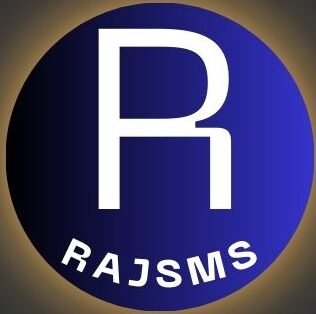Rare and Valuable 1996 Dimes To the casual observer, the dime from 1996 probably appears to be an ordinary coin. However, there are certain 1996 dimes that collectors will pay top dollar because of rarity, minting errors, or just being in pristine condition. This article describes what makes 1996 dimes collectible, and what to check if you suspect you might have one that is worth more than 10 cents.
The Roosevelt Dime: A Tribute to FDR
The Roosevelt dime has been in circulation since 1946 as a tribute to President Franklin D. Roosevelt, who helped establish the March of Dimes for polio. Dime coins are made of a core of copper and nickel plating, so they are worth more as a numismatic piece than the value of the metal.
In 1996, billions of dimes were struck at three U.S. Mints:
Philadelphia Mint: No mintmark.
Denver Mint: “D” mint mark. West Point Mint: “W” mint mark for a commemorative coin for the 50th anniversary. Certain other error coins will sell for a higher premium than other coins. 1996-W Roosevelt Dime:
A Special Collector’s Coin.

The 1996-W dime was manufactured by the West Point Mint as a part of a commemorative collector’s set for the 50th anniversary of the Roosevelt Dime series. Unlike the 1996 dimes placed into production, the 1996-W dime was not released into general circulation and thus is much more elusive.
Mintage: Approximately 1.4 million.
- Circulation: These coins were exclusively included in collector’s sets, meaning most are found in uncirculated condition.
- Value: Depending on condition, these dimes are worth $20 to $50 or more, especially in higher grades.
- Because of its limited mintage and special origin, the 1996-W Roosevelt Dime remains a sought-after piece for collectors.
1996-D Dime Errors: Unusual Minting Mistakes
Dimes minted in Denver often have valuable errors that can significantly increase their worth. Errors occur during the minting process and can result in unique variations that collectors prize.
Possible Errors:
- Off-Center Strikes: Portions of the design may be missing due to misalignment during striking.
- Die Cracks: Worn dies can create visible cracks on the coin’s surface.
- Missing or Faint Mintmarks: The “D” mintmark may be partially or completely missing.
Value:
Error dimes can vary anywhere from $10 to $100+, depending on how rare or visible the error is. Denver error dimes are of specific interest to collectors, as errors create rarity and desirability.
1996 No-Mintmark Dime: Philadelphia’s Contribution
Standard 1996 dimes without a mintmark were produced at the Philadelphia Mint. While most of these dimes are common, certain characteristics can make them valuable.
Collectible Features:
Look for minting errors such as doubled dies (where design elements are struck twice) or weak strikes that affect the coin’s appearance.
High-grade Philadelphia dimes with errors or pristine details can fetch a premium.
Value:
The vast majority of 1996 dimes without a mintmark are worth face value. However, there are error coins that are priced at $10-$50 and above. High-Grade 1996 Dimes: Condition Affects Value Condition is a huge factor in determining the value of a coin. Coins rated MS67 and higher (Mint State) are valuable because they show very little or no mark/imperfection at all.
Grades to Look For:
- Coins with Full Bands (FB) on the torch of the reverse are particularly valuable, as they indicate a strong strike with well-defined details.
- Coins certified by professional grading services like PCGS or NGC in high grades often sell for a premium.
Value:
Depending on the scarcity and certification, superior quality dimes from 1996 can reach sale prices of $50 or more Selling or Collecting Dimes That Are From 1996 Individuals can sell rare and superior quality dimes that are from 1996 through the following ways: Coin Dealers: These knowledgeable dealers can appraise and purchase the coins directly.
- Auctions: Coins that are rare typically command strong prices at auction.
- Online Marketplaces: Platforms like eBay and Heritage Auctions allow sellers to reach collectors worldwide.
- Preserving Your Coins: Protecting Their Value
To maintain the value of your collectible coins, proper handling and storage are essential.
Best Practices:
- Storage: Use air-tight coin holders or albums to prevent damage from air exposure and contaminants.
- Handling: Avoid touching coins directly to maintain their surface quality—hold them by the edges.
- Avoid Cleaning: Cleaning can damage the coin’s surface and significantly lower its value.
Conclusion: Could You Have a Hidden Treasure?
Although the majority of 1996 dimes are only worth face value, a few individual examples are scarce, are considered errors, or are in excellent condition. The 1996-W Roosevelt Dime is a very popular item among serious collectors. The same goes for error coins and high-grade coins from the Philadelphia or Denver mint that have monetary value.
FAQs
1. Why are 1996 dimes considered rare and valuable?
Some 1996 dimes have unique errors, minting variations, or limited circulation, making them sought-after by collectors.
2. How much is a rare 1996 dime worth?
The value depends on the rarity, condition, and any minting errors. Some 1996 dimes can be worth hundreds or even thousands of dollars.
3. What mint marks should I look for on a 1996 dime?
The 1996 dimes were minted with “P” (Philadelphia), “D” (Denver), and “S” (San Francisco for proof coins). Some error dimes or proof coins can be highly valuable.
4. How can I identify an error on a 1996 dime?
Look for off-center strikes, double dies, missing elements, or any unusual features that differ from standard dimes. Using a magnifying glass can help spot errors.
5. Where can I sell a rare 1996 dime?
You can sell rare 1996 dimes at coin dealers, online marketplaces like eBay, auction houses, and numismatic forums.



